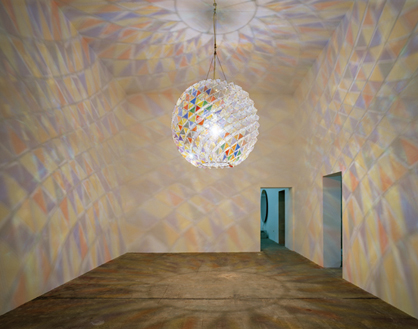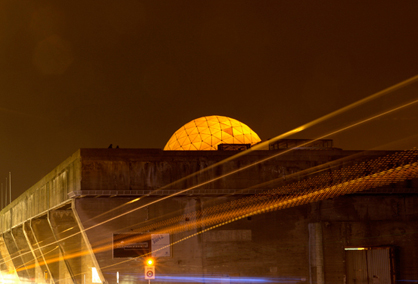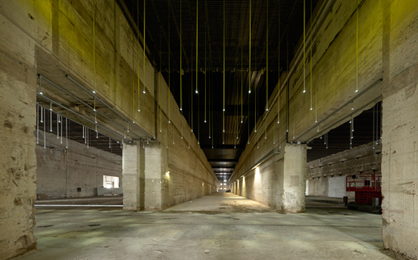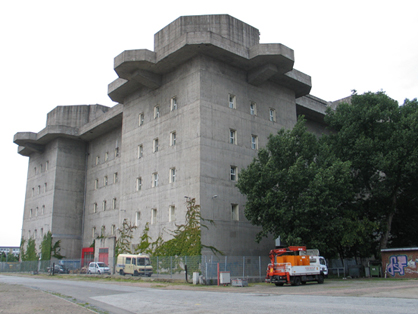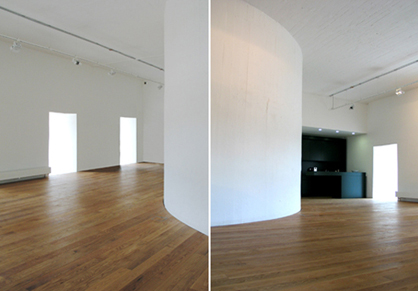Indestructible Remembrance
Texto por Nora Schmidt
Berlin, Alemania
28.07.08
As if their indestructible presence wanted to make sure that we don't forget the past. As if they wanted to tell us that war is present everywhere – for many years now the bunkers.
As if their indestructible presence wanted to make sure that we don't forget the past. As if they wanted to tell us that war is present everywhere – for many years now the bunkers which had for the most part survived the Second World War without major damage were regarded as an ugly remnant, without much thought being given to their historical and architectural background.
„Reichsbahnbunker Friedrichstraße“ at Berlin Mitte is now a private museum of the Boros Collection
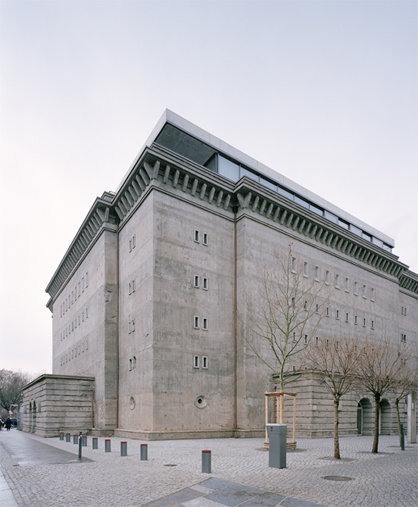
„Reichsbahnbunker Friedrichstraße“ at Berlin Mitte is now a private museum of the Boros Collection
×In 1958 the French architect and philosopher Paul Virilio spent a number of years looking for traces of these bunkers during an archaeological journey of discovery in his home region along France's Atlantic coast. In the early Nineteen Forties the German occupation troops build the so-called Atlantic Wall here, consisting of 16,400 concrete defensive structures.
The impressions which these gigantic remnants of former warfare, now functionless, made on him are recorded in the photos and texts which make up his famous 'Bunker Archaeology.'
"The bunker [...] is less a warning about the opponent from the past than about the war of today and tomorrow: about total war, the risk which is present everywhere, the immediacy of the danger, the great amalgamation of what is military and what is civilian, the homogenisation of conflict."
Santiago Sierra at the Boros Collection. Some of the works had to be modified especially for the unusual exhibition location
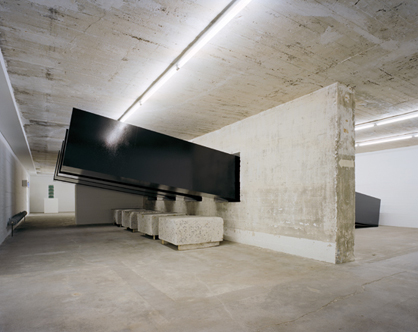
Santiago Sierra at the Boros Collection. Some of the works had to be modified especially for the unusual exhibition location
×In spite of their historical and architectural significance many bunkers have been used as storage facilities or cowsheds. It is not least thanks to the influence of Paul Virilios that these colossal late forms of European fortress architecture have received greater attention in recent years. As a result they have been analysed in depth and put to more suitable use.
Berlin Colour Sphere by Olafur Eliasson, 2006, Boros Collection
Before the art collector Christian Boros acquired the 1942 tall bunker in central Berlin in 2003, the former 'Reichsbahnbunker Friedrichstraße' during the war years served as an air raid shelter for civilians. After the German capitulation it was used by the Red Army as a prison. During the GDR years this historic building was nicknamed the 'banana bunker' by Berliners because it was used by the fruit and vegetable cooperative for the storage of fruit. Then, after German reunification, a number of legendary parties took place in the 13-metre high rooms.
In this centrally located monolith Christian Boros found suitable surroundings for his extensive collection of contemporary art. After the four-year conversion by Jens Casper from the Berlin firm of architects Realarchitektur, the approx. 500 works by artists such as Damien Hirst, Wolfgang Tillmans, Olafur Eliasson and Tobias Rehberger were able to take up residence. The regularly changing exhibitions are presented over an area of 3000 square metres. Some ceilings and walls were removed, but for the building's owner it was important to keep the building as authentic as possible. Shell holes from the war and traces of former walls on the floor document the eventful history of the bunker.
On the roof of the colossus there is a glass penthouse which doesn't just serve Christian Boros and his family as a home but also transforms the solid substructure into the base of a throne.
The gigantic submarine bunker in the harbour of Saint-Nazaire
A further example of successful use of bunkers is the design of a cultural centre by the German and French architects LIN - Finn Geipel and Giulia Andi - in Saint-Nazaire, Brittany. The massive former submarine bunker is located at the port, on the edge of the town centre which was rebuilt after the war. Since 1996 it has been rebuilt in several stages to accommodate a range of cultural facilities which have revived its existence – the 295 metre long, 130 metre wide and 19 metre high monster consists of 480,000 cubic metres of concrete and can't be demolished.
The concept, which was presented twelve years ago by Manuel de Solà, refers on the one hand to the bunker's bizarre architectural form and on the other to the way it dominates the area around it. A ramp enables visitors to view the strange concrete structures on the building's giant roof. These were intended to ensure the premature detonation of bombs and to keep the impact from spreading to the rest of the building. By opening up two halls of the submarine bunker the architect has also created a line of sight between the city and the harbour. In addition pavilions have created space for cafés and shops. In the year 2000 the Escal’Atlantique museum planned by Francois Seigneur and Francois Confino was inaugurated.
The dome of the Tempelhof Airport in Berlin, now on top of the submarine bunker in Saint-Nazaire
LIN completed the conversion by integrating a multi-functional exhibition area, a stage for contemporary music, a bar and a geodetic cupola on the roof of the bunker. A wide corridor joins the individual spaces.
All the spatial elements which have been added can easily be identified as specially integrated structures, which enables the architects to highlight the contrast between the enormous fabric of the bunker and their own architectural interventions. The walls of the bunker have simply been cleaned, and retain their original patina.
The illuminated cupola on the roof, which during the Cold War assisted Berlin's Tempelhof airport in monitoring eastern European airspace and was donated to the Saint-Nazaire bunker, almost gives the impression of being a memorial light and gives the surreal concrete giant something of the character of a cenotaph.
Anti-aircraft towers are high bunkers which at the same time served as firing platforms and therefore resemble medieval fortresses in their massive structures. The anti-aircraft tower on the Heiligengeistfeld in Hamburg has for years now been converted and put to different uses by various groups. It has now established itself as a significant events location and a centre for studios.
The Hamburg architects Heyden and Hidden have designed a chamber concert hall, a form of use which benefits from the favourable acoustic conditions. Facilities for wardrobe, kitchen and counter separate the entrance area from the concert hall itself.
The anti-aircraft tower in Heiligengeistfeld in Hamburg
The concert hall designed by Heyden und Hidde Architekten
The photographic project 'False chalets' by Christian Schwager, which was on display at Zurich's Design Museum, shows a Swiss curiosity when it comes to bunker structures.
During the days of the Cold War innumerable bunkers were built in Switzerland for civil defence and as air-raid shelters. Until just a few years ago every Swiss citizen was allocated a place in such a shelter. Some of the bunkers were even camouflaged as normal homes or barns. Christian Schwager set out to photograph a number of especially distinctive examples of such structures.
Observation bunker, camouflaged as a barn, 1937, Sufers, Grisons, Switzerland, Photo by Christian Schwager
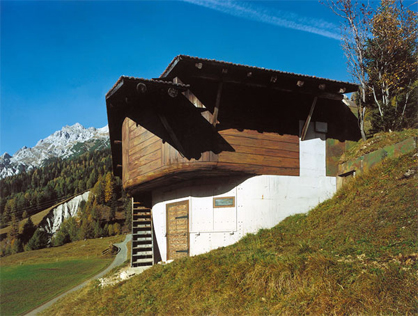
Observation bunker, camouflaged as a barn, 1937, Sufers, Grisons, Switzerland, Photo by Christian Schwager
×Artillery bunker, camouflaged as a barn, 1941, Ennetberg,Glaris, Switzerland, Photo by Christian Schwager
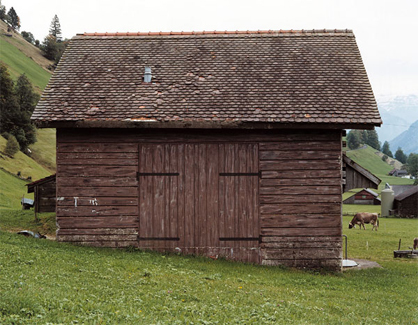
Artillery bunker, camouflaged as a barn, 1941, Ennetberg,Glaris, Switzerland, Photo by Christian Schwager
×

